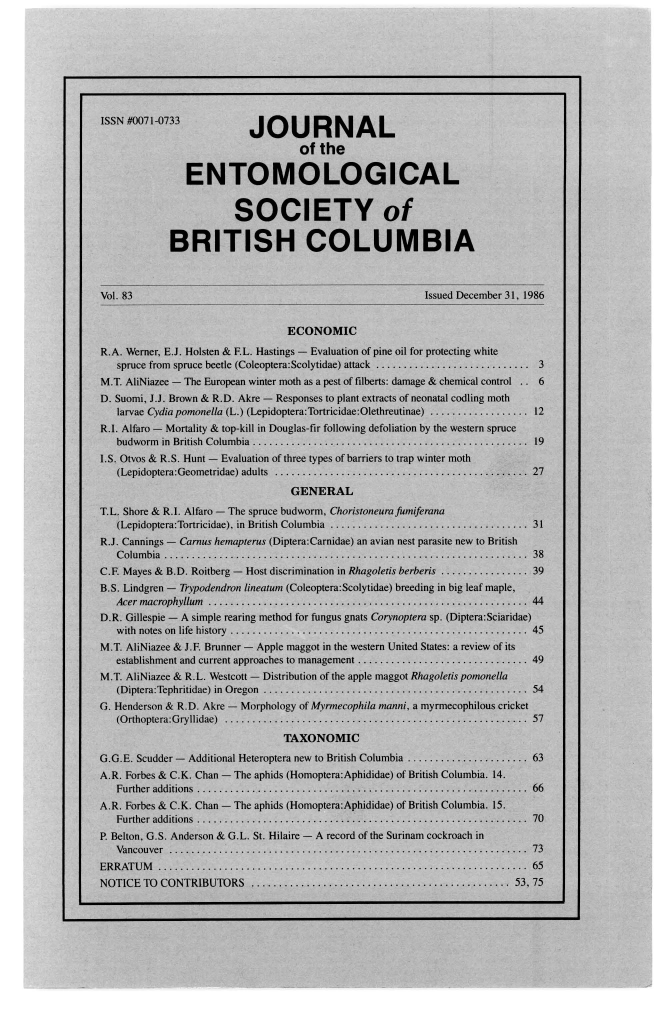A simple rearing method for fungus gnats <i>Corynoptera</i> sp. (Diptera: Sciaridae) with notes on life history
Keywords:
fungus gnats, <i>Corynoptera</i>, Diptera, SciaridaeAbstract
A method of rearing fungus gnats of <i>Corynoptera</i> sp. (Diptera: Sciaridae) is described, based on a diet of bean seed and horticultural peat. The gnats completed development from egg to adult in 13-15 days at 24 + 2° C. Oviposition and longevity were increased by a honey supplement to the adults.References
Dennis, D.J. 1978. Observations of fungus gnat damage to glasshouse curcubits. N.Z.J. Exp. Agric. 6:83-84.
Fordyce, C., Jr. and W.W. Cantelo. 1981. Techniques to extract immature stages of Lycoriella mali from mushroom growing media. J. Econ. Ent. 74:253-254.
Kennedy, M.K. 1973. A culture method for Bradysia impatiens (Diptera: Sciaridae). Ann. Entomol. Soc. Am. 66:1163-1164.
Lindquist, R.K., W.R. Faber, and M.L. Casey. 1985. Effect of various soiless root media and insecticides on fungus gnats. HortScience 20:358-360.
Thomas, C.A. 1929. A method for rearing mushroom insects and mites. Entomol. News. 40:222-225.
Wilkinson, J.D. and D.M. Daugherty. 1970a. The biology and immature stages of Bradysia impatiens (Diptera: Sciaridae). Ann. Entomol. Soc. Am. 63:656-660.
Wilkinson, J.D. and D.M. Daugherty. 1970b. Comparative development of Bradysia impatiens (Diptera: Sciaridae) under constant and variable temperatures. Ann. Entomol. Soc. Am. 63:1079-1083.
Downloads
Published
Issue
Section
License
Authors who publish with the Journal of the Entomological Society of British Columbia agree to the following terms:
-Authors retain copyright and grant the journal right of first publication with the work simultaneously licensed under a Creative Commons Attribution License that allows others to share the work with an acknowledgement of the work's authorship and initial publication in this journal.
-Authors are able to enter into separate, additional contractual arrangements for the non-exclusive distribution of the journal's published version of the work (e.g., post it to an institutional repository or publish it in a book), with an acknowledgement of its initial publication in this journal.
-Authors are permitted and encouraged to post their work online (e.g., in institutional repositories or on their website) prior to and during the submission process, as it can lead to productive exchanges, as well as earlier and greater citation of published work (See The Effect of Open Access).


